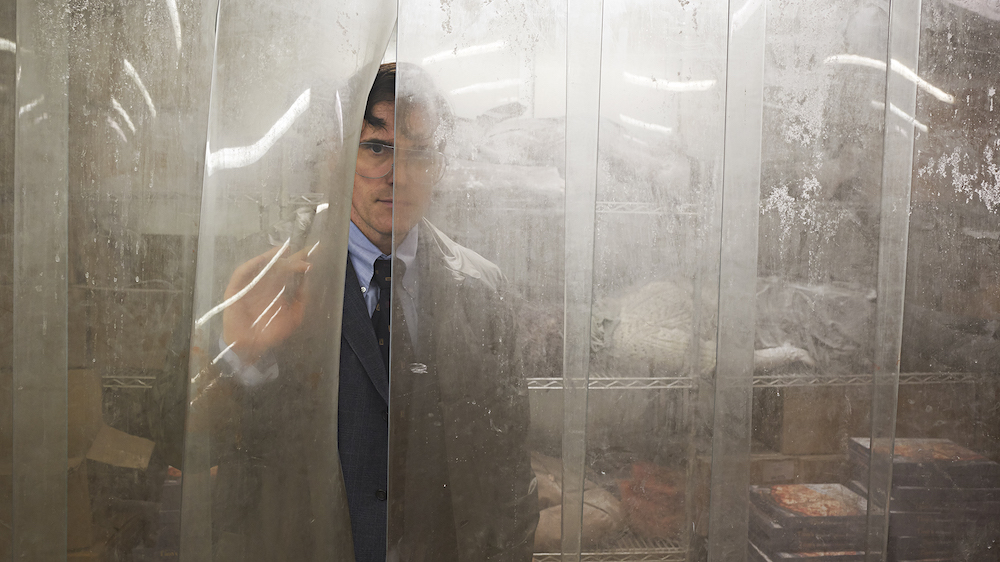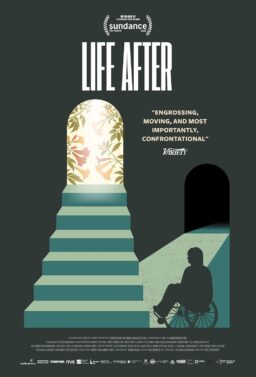The first time I watched “Nymphomaniac,” it was cold and it was late and a slant of light from a street lamp striped the floor of my studio apartment, casting ugly shadows on the wall behind my laptop. Innocuous items—a mug full of pens, a bottle of vitamins, a porcelain deer—grew in size, a grotesque sprawl that hovered, claws-raised, over the screen below. I watched all four hours of the two-part film through strained eyes, the shadows eventually morphing into stringed black creatures before dissolving as daytime encroached. I remember them because they evoked the very sensation that comes over me when I watch a new Lars von Trier film: judgment and condemnation. As if I willed them to life to consider my sin.
There is inherent shame that comes from my fascination with von Trier. It is the shame of being a woman, and therefore a target of his artistic rage. The shame of knowing full well the things he’s done, like drunkenly calling himself a Nazi at a Cannes press conference, or getting naked on set in front of female actors, or telling Nicole Kidman he wanted to “tie her up and whip her” during rehearsals for “Dogville,” or sexually harassing Björk on the set of “Dancer in the Dark.” Things I acknowledge, and that sit like cold lumps in the back of my throat when I eagerly return to “Breaking the Waves,” “Melancholia,” and “Antichrist.” Movies I adore, that invoke something beneath my skin, and that grow in meaning as I grow in age: Bess McNeil’s (Emily Watson) mania and complicated relationship with religion in “Breaking the Waves”; Justine’s (Kirsten Dunst) cosmic depression in “Melancholia”; Charlotte Gainsbourg’s She and her deep, psychosexual self-hatred in “Antichrist.” All feelings I’ve vacillated between in my adulthood, but also feelings that are drenched in the poisoned blood of their creator, irrevocably tied to his mounting misdeeds—and perhaps mine, too.

Watching von Trier is entering into a deranged agreement. All parties are guilty, and good morale is sacrificed. But to enter willingly as a woman adds an extra layer of malignancy. His “Antichrist”-and-beyond era is especially troublesome, as his focus narrowed to a field of vision that sees only the pain perpetuated against women, often by themselves: a woman slicing off her clitoris with a rusty pair of scissors, another ravished by depression and burned to a crisp in a cosmic apocalypse, and another so addicted to sex that she’s found beaten and urinated on in her film’s opening chapter.
And then there’s von Trier’s latest, sickest work, “The House that Jack Built,” a two-and-a-half-hour Hell journey through the baroque mind of a modern-day serial killer, played by Matt Dillon. The film tracks Jack as he hones his sadism, weaponizing his latent misogyny and picking off women—any woman, really, but the ones that annoy him most are assigned the cruelest fate. In the opening chapter, he finds his first victim (Uma Thurman) on the side of the road as she’s having car trouble. He drives her to a nearby mechanic, and she taunts and annoys him—accuses him of looking like a serial killer, practically begging him to do her in—until he eventually murders her by bashing her face with a tire-jack. We see, throughout the movie, glimpses at the results: the bloody, caved-in skull of a beautiful woman who was murdered for simply seeing through the veneer of a destructive male ego.
This continues on, each segment wildly outdoing itself. Jack strangles a woman (Siobhan Fallon Hogan) in her home and then drags her body behind his car, her face shredding into goo on the asphalt. He stalks a mother (Sofie Gråbøl) and her two sons, then ghoulishly arranges their bodies in a mock picnic, forcing her to feed her dead child a slice of pie before shooting her in the head. He insults his girlfriend (Riley Keough) before trapping her in her apartment and amputating her breasts, one of which he later re-fashions into a wallet. He stores his victims in an industrial freezer, he takes photographs of their bodies in rigor mortis, posing them to the desired effect. He calls himself “Mr. Sophistication” and speaks highly of art despite his failed architectural endeavors and clumsy kills. He’s a MAGA Hannibal Lecter, accidentally auspicious.
<span class="s1" The psychopath-as-artist metaphor (if you can even call something discussed ad nauseam in the text a “metaphor”) is the great theme of “The House That Jack Built,” a too-obvious meditation on von Trier’s own career. As Jack narrates his story like the BTK killer on trial—methodically, unsympathetically—to “Verge,” a clear allusion to Dante’s Virgil, his reflections mutate into a pastiche of von Trier’s own filmography. Quite literally, too: We see scenes from his films play out in one of Jack’s long rants about separating art from artist, dejecting the idea that art is inherently therapeutic. Jack’s ego is a shadow play of the media character von Trier has become, a puppet of the absurd and narcissistic.

Why, then, do I find myself so enraptured by “The House That Jack Built”? I, of course, find no comfort in the images of bloodied female bodies, their anatomy splayed carnally and ridiculously in progressively deranged ways. I do not sympathize, empathize, or even remotely feel in any small way for Jack, nor does he for himself, I don’t think. There’s nothing to love in the film’s ornate nihilism or violence against not just women, but also animals and children.
And yet, and yet … I am fascinated by the film’s empathetic purview of the harsh conditions women live under, the horrors foisted on our bodies and souls by wicked men like Jack, who get away—over and over and over and over again—with the most despicable crimes imaginable, some so normalized they remain downright conspicuous. Indeed, “The House that Jack Built” has been slapped with the same incongruent criticisms as works like “Antichrist” and “Nymphomaniac”; that it’s a “huge fuck you” to its viewers, that it’s “self-congratulatory,” that it’s “empty and repugnant.”
But I share none of that resentment. I see, instead, a man reconciling with his id, making a mockery of the behavior he’s both monetized and perverted, and that he keeps getting away with. The film, to me, reads as both self-critical and critical of the audience who paid to sit through it. If von Trier is Jack—and of course he is—there is much to be gleaned from how often he points to Jack’s continued unearned salvation. At one point, after driving his second victim’s body through the streets, leaving a literal blood trail, rain begins to fall, a “divine” act that erases all the morbid evidence almost immediately. Later, Jack hijacks a police car and parks it outside his storage facility, the siren still blaring, mere meters away from his lewd freezer full of mutilated bodies, as if he’s begging to be found—and yet before he can be caught, he’s saved, yet again, by Verge’s intervention. Jack is a comically inept criminal, and yet he evades persecution over and over, as men are wont to do. In my reading, von Trier isn’t winking at his ability to slink through the cracks as he continues making art: he’s outright mocking the systems that allow people like him—the wealthy, white, artistic male elite—to do so. In the end, Jack isn’t saved or forgiven or set free. He’s cast into the deepest fires of Hell. When the credits hit, Buster Poindexter’s “Hit the Road Jack” blares, as if to glorify in Jack’s sudden departure. “Don’t you come back no more.”
Indeed, there are rumors that “The House That Jack Built” will be von Trier’s final film. I could think of no better way for a controversial filmmaker to bow out: With a blatant condemnation of himself and the systems that let men like Jack win. Maybe it is a “fuck you.” And maybe we deserve it.











